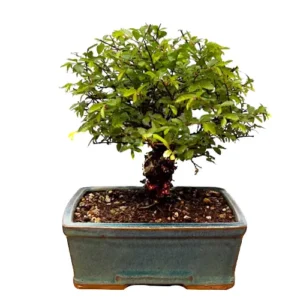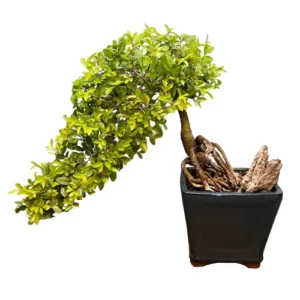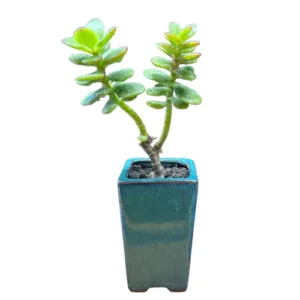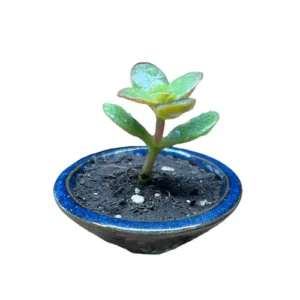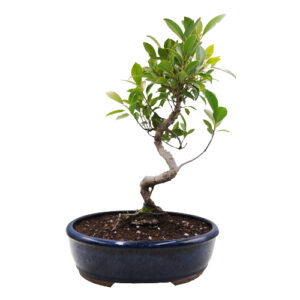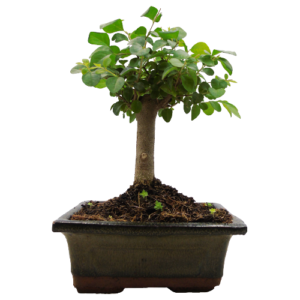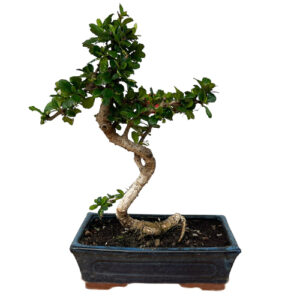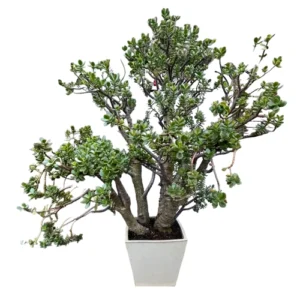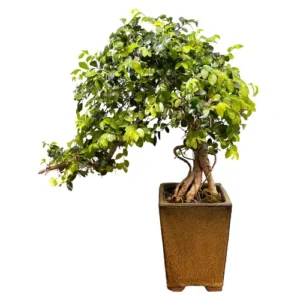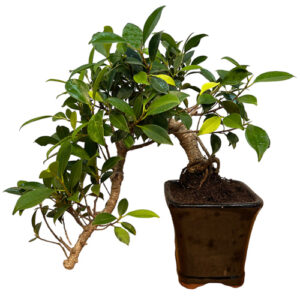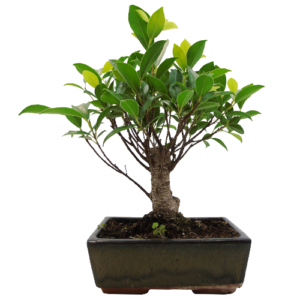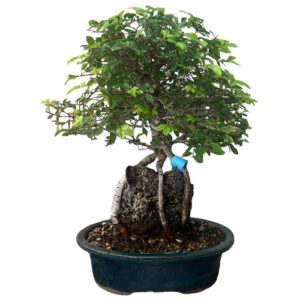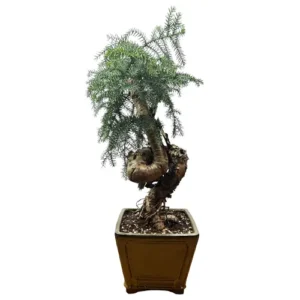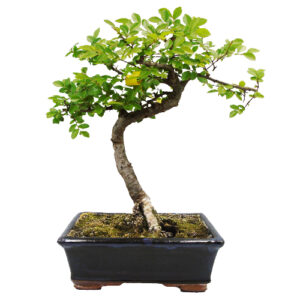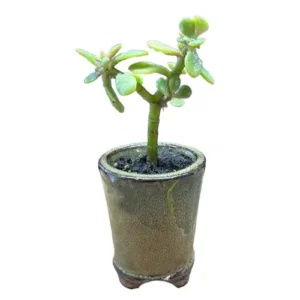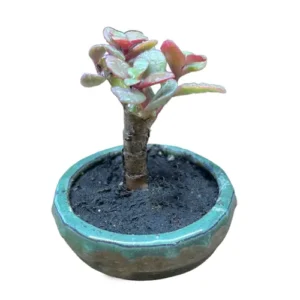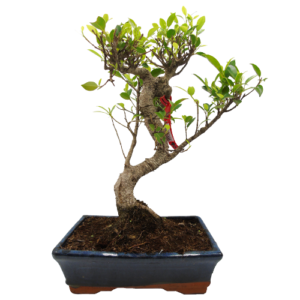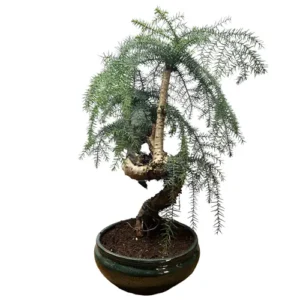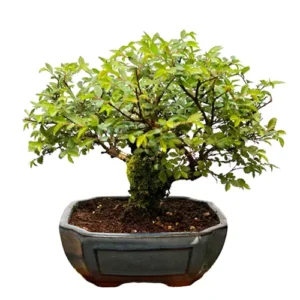Gledista Triacanthos
Honey Locust Bonsai
Native to North America and a member of the pea family, this deciduous tree is graced with long frond-like leaves on top of slender elegant trunks. Its lithe foliage turns a pleasant pale yellow in the autumn. The supple form of this bonsai hides considerable strength and tolerance.
Honey Locust Bonsai Care Tips
Placement
Honey Locust demand full sun with some frost protection in winter. Any frost below -5 degrees Celsius can inflict twig dieback. Air circulation is a trivial matter for this species, as it is abundantly tolerant of poor air quality.
Watering
During the growing season, Honey Locust requires daily watering. Come the winter, water in scant amounts and only to assure a consistent soil moistness.
Feeding & Fertilising
Throughout the growing season, Honey Locust requires feeding every two weeks.
Pruning & Wiring
A robust pruning should take place towards the end of winter, including the removal of any branches. New shoots should be trimmed through the summer.
Small to medium species can be styled to a range of styles including slanting, cascade, root over rock and informal upright. We recommend using wires with a thickness that matches the thickness of the branch: if the wire you choose is too thick you will damage the bark. If it is too thin, it won’t be effective.
Repotting
Repotting your tree is an important way to provide a fresh and suitable soil mix and ensure appropriate root health. Honey Locust should be repotted every two to three years in the spring. A good indicator is the extension of new buds.
Trees that are ready for repotting will require root pruning, a suitable new pot and appropriate soil mix.
When repotting, do not cut back the root mass by a large amount, and choose a well-draining soil mix that has a neutral or slightly higher PH value of 5-6 but not over 7. We tend to use a mixture of different speciality bonsai soils on our trees. Every species is different so please contact us for free soil-mix advice or to take advantage of our repotting service.
Bonsai trees aren’t only magnificent additions to an indoor oasis, they are more than capable of standing out in any garden. Many Bonsai species are incredibly hardy and withstand nature’s colder and damper turns with aplomb making them worthwhile outdoor plants. We have an extensive library of care guides for outdoor bonsai trees. It’s not about selecting the perfect bonsai, it’s about selecting the perfect bonsai for you.
Honey Locust Bonsai - Typical Queries
Are Honey Locust bonsai trees easy to grow?
Honey Locust bonsai trees are considered to be moderately easy to grow, as they are adaptable to different climates and environments. However, they do require some attention and skill to keep them healthy and beautiful. Honey Locust bonsai trees may be susceptible to gall midges on their foliage. Honey Locust bonsai trees also need to be protected from frost and extreme heat, as they can damage the leaves and roots.
Can Honey Locust bonsai be kept indoors?
Honey locust bonsai can be kept indoors, but they will not thrive as well as outdoors. Honey locust bonsai need plenty of light and fresh air to grow properly, so they should be placed near a bright window or under artificial lights. Honey locust bonsai also need to be exposed to seasonal changes in temperature and daylight, as they are deciduous trees that go dormant in winter. Therefore, it is recommended to move the honey locust bonsai outdoors during the warmer months, and bring it indoors only when the temperature drops below 10°C (50°F).
Are Honey Locust bonsai messy?
Honey locust bonsai can be messy, as they shed their leaves in autumn and produce long, brown seed pods that can fall off and litter the ground. The seed pods can also attract rodents and birds, which can damage the bonsai or its pot. To prevent this, it is advisable to remove the seed pods as soon as they appear or to sterilize the bonsai by spraying it with a diluted alcohol solution before the flowering season. Alternatively, one can choose a cultivar of honey locust that does not produce seed pods, such as ‘Sunburst’ or ‘Shademaster’.

